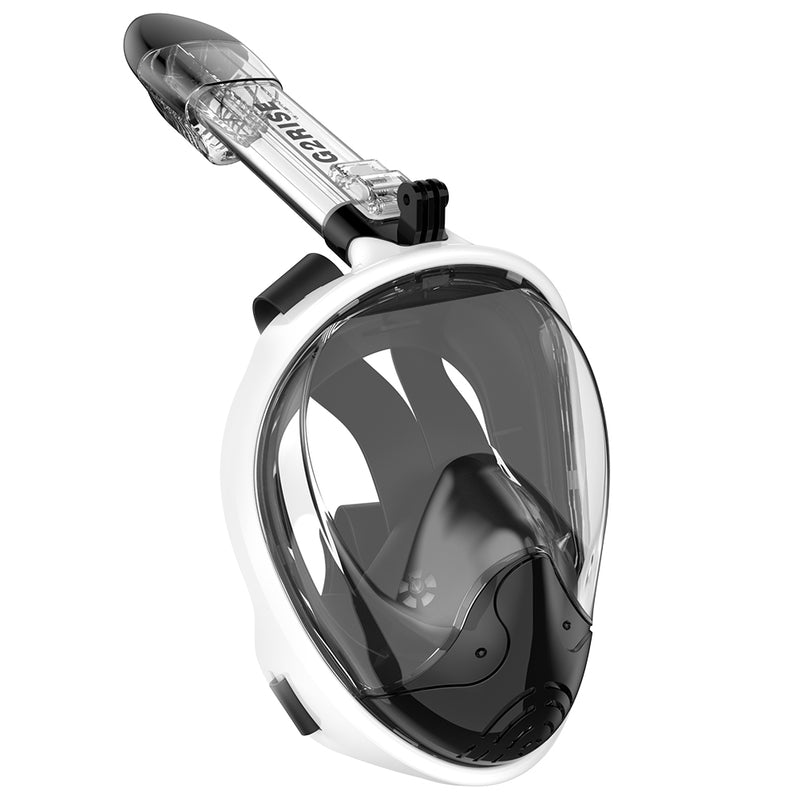Discover the Ultimate Snorkel Masks for Kids That Will Make Splashing Adventures Unforgettable!
Snorkeling is a magical experience that allows kids to explore the vibrant underwater world, where colorful fish and fascinating marine life await. With the growing popularity of snorkeling among children, it's crucial for parents to choose the right snorkel mask to ensure both safety and enjoyment. A well-fitted snorkel mask not only enhances the experience but also keeps water out, ensuring that kids can focus on the wonders beneath the surface without any discomfort. In this article, we will delve into the best features of kids' snorkel masks, helping you navigate the options available to find the perfect fit for your little adventurers.

Understanding Kids Snorkel Masks
A snorkel mask consists of several key components: the lens, skirt, and strap. The lens is typically made of tempered glass, providing clarity and durability underwater, while the skirt is crafted from silicone to create a comfortable seal against the face. The strap holds the mask securely in place. In kids' masks, these components are specially designed to accommodate smaller faces and ensure a snug fit. For instance, the silicone skirt in children's masks often features softer edges to prevent discomfort and leaks. Additionally, the strap is usually more adjustable, allowing for a better fit as kids grow. Understanding these components can help parents make informed choices about the best snorkel masks for their children.
Key Features to Look For
When selecting a snorkel mask for kids, there are several essential features to consider. Safety is paramount, so look for masks with tempered glass lenses that resist breakage. Comfort is also crucial; a mask that fits well will not only be more comfortable but will also create a better seal, preventing water leaks. The mask should have adjustable straps that can grow with your child, ensuring a secure fit without pinching or discomfort. Visibility is another important factor; masks with wider lenses provide a better peripheral view, allowing kids to take in their surroundings. A good seal is essential, as it keeps water out and ensures a more enjoyable snorkeling experience. Prioritizing these features will help guarantee a positive underwater adventure for your kids.
Different Types of Kids Snorkel Masks
There are two primary styles of kids' snorkel masks: full-face masks and traditional masks. Full-face masks cover the entire face, allowing for easy breathing through both the mouth and nose. They are particularly appealing for younger kids or beginners who may feel uncomfortable with a traditional mask. However, they can sometimes fog up more easily and may not provide the same underwater visibility as traditional masks. On the other hand, traditional masks consist of a separate snorkel and mask setup, offering better visibility and reducing the chance of fogging. These are often recommended for older kids or those who have some snorkeling experience. Each type has its pros and cons, and the best choice depends on your child's age, comfort level, and snorkeling skills.
Tips for Choosing the Right Snorkel Mask
Choosing the right snorkel mask for your child can seem daunting, but with a few practical tips, the process can become much easier. First, ensure that the mask fits snugly; it shouldn't be too tight or too loose. A simple way to test fit is to have your child place the mask on their face without using the strap and inhale gently through their nose; the mask should stay in place. Additionally, consider your child's age and swimming abilities when selecting a mask. Younger kids might benefit from a full-face mask for ease of use, while older children might prefer a traditional mask for better visibility. Also, consider the environment where they'll be snorkeling. For pool use, a basic mask might suffice, but for ocean use, opt for a more robust design that can withstand waves and currents.
Safety Precautions While Snorkeling
Safety should always come first when kids are snorkeling. Supervision is essential; parents should always keep an eye on their children while they’re in the water. Teaching kids the buddy system—where they snorkel with a partner—can also enhance safety. It's important to make them aware of their surroundings, including the location of lifeguards and potential hazards like rocks or strong currents. Additionally, ensuring that kids are comfortable in the water and have practiced basic snorkeling skills can prevent accidents. Introducing them to snorkeling gradually can help build their confidence and enjoyment, making the experience both safe and fun.
Key Takeaways for Selecting a Kids Snorkel Mask
In conclusion, selecting the right snorkel mask for your child is crucial for their safety and enjoyment while exploring the underwater world. By understanding the components of kids' snorkel masks, recognizing key features, and being aware of the various types available, parents can make informed choices. Additionally, practical tips on fitting and safety precautions will help ensure a positive snorkeling experience. With the right mask, your kids will be ready to embark on unforgettable underwater adventures, creating memories that will last a lifetime.








